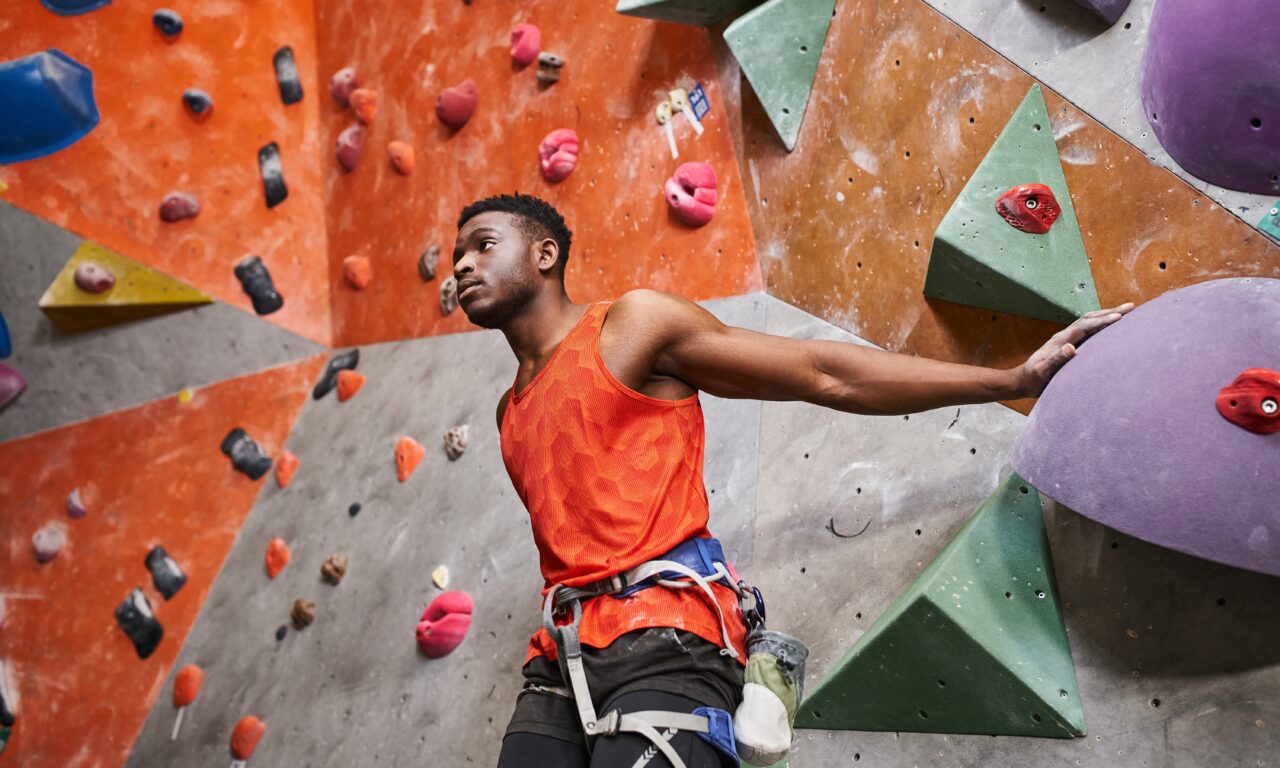Climbing sponsorships could be the next big move for your brand

What happens when a subculture sport becomes an Olympic discipline, a $3.5 billion industry, and a Gen Z lifestyle touchpoint all at the same time? For climbing, it means a rare window where visibility is rising, audiences are premium, and sponsorship space is being snapped up.
With 50 million active climbers worldwide, surging gym memberships, and a growing IFSC competition circuit, climbing is no longer niche. It’s mainstream and media-backed. The IFSC World Cup is now streamed globally, its YouTube viewership has grown 280% since 2019, and its Olympic debut in Tokyo drew millions.
While gear providers have always naturally sought involvement, non-endemic sponsors are now waking up to the remarkable climbing sponsorship opportunities.
Aligning with the audience and the adrenaline
Climbing’s audience is urban, affluent, and experience-led. Whether in New York bouldering gyms or Munich lead walls, climbers consistently over-index on education, income, and sustainability awareness.
That’s why Breitling partnered with Olympic champion Janja Garnbret, positioning the brand around female performance, technical precision, and individual excellence. It’s why Volkswagen’s financial services arm linked their sponsorship of climbing with social mobility, and why Allianz tied their name to the IFSC World Cup, using events in Asia and Europe to anchor regional storytelling.
Another notable early mover outside the outdoor category is Toyo Tires, which signed on as an official partner of the 2024 IFSC World Cup season. The deal included branding across high-profile events in Seoul, Salt Lake City, and Innsbruck, helping the brand connect with a younger, urban audience drawn to high-performance and precision: attributes that align naturally with both elite climbing and Toyo’s core product messaging. It’s a strong example of how non-endemic brands can enter the sport credibly by leaning into shared values rather than just visibility.
Climbing doesn’t just offer reach, it offers alignment. With its unique blend of endurance and adrenaline, the sport gives brands a platform to speak about resilience, progress, and purpose, not just visibility.
To read more about how brands are navigating sponsorship of extreme sports, click here.
Content with edge and values
Unlike traditional team sports, climbing’s content is visually gripping, emotionally honest, and driven by personal stories. The format (head-to-head battles, buzzer finishes, and high-stakes finals) makes it perfect for short-form, social-friendly video, while the community’s authenticity gives it rare cultural credibility.
But the sport’s commercial structure is still nascent. Most athlete deals are non-exclusive and IFSC event rights remain modestly priced, despite increasing exposure through Eurosport, Olympic Channel, and streaming platforms.
Event formats that flex
Climbing offers flexible sponsorship tiers to match different brand strategies. Allianz’s partnership with the IFSC provides global exposure through broadcast, digital, and youth-focused channels. Breitling’s deal with Janja Garnbret shows the power of athlete-first storytelling, combining Olympic visibility with long-term brand alignment. At the grassroots level, brands can activate locally through gyms like BlocHaus or The Cliffs, building trust and relevance in key cities. Together, these approaches let sponsors scale impact from community to global stage.
With the 2025 IFSC World Cup circuit underway, featuring stops in Salt Lake City, Innsbruck, Chamonix, and Jakarta, brands have access to both broadcast and in-person engagement opportunities in key growth regions. The landscape for climbing sponsorship opportunities offers unmatched flexibility for both legacy and challenger brands.
Climbing sponsorship opportunities in 2025
Climbing isn’t just growing, it’s accelerating. In the U.S. alone, the indoor climbing market hit $1.23 billion in 2023, with projected growth to $1.71 billion by 2030. Bouldering alone is on track to become a $3.5 billion global market by 2032.
Yet the space is not yet dominated by legacy brands. While energy drink and outdoor brands remain present, the real white space lies with non-endemic sectors: finance, telco, tech, and mobility.
To read about how Padel sponsors have made the most of its cultural relevance, click here.
This isn’t just about lifestyle, it’s about legacy
Climbing is fast becoming what skateboarding was in the 2000s and surfing in the 2010s: a culture-first, athlete-led, values-aligned sport on the edge of commercial transformation. Climbing sponsorship opportunities are available to seize this surge.
It speaks to a generation that chooses brands based on story, not just exposure and gives sponsors the chance to shape that story, not just rent space inside it.









